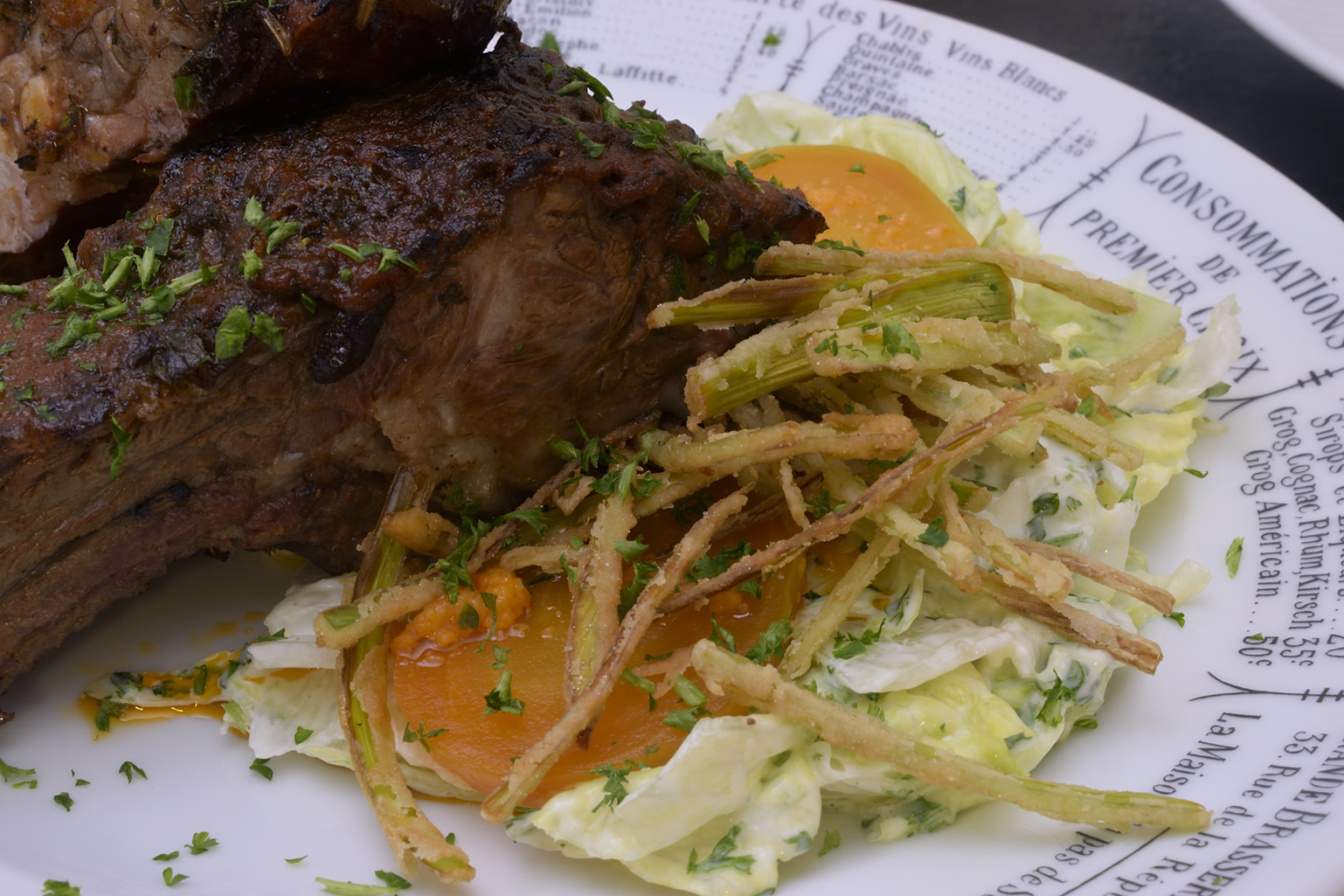Sous Vide: Prime Rib Bones (dem bones, back bones, beef bones, etc.)--2020
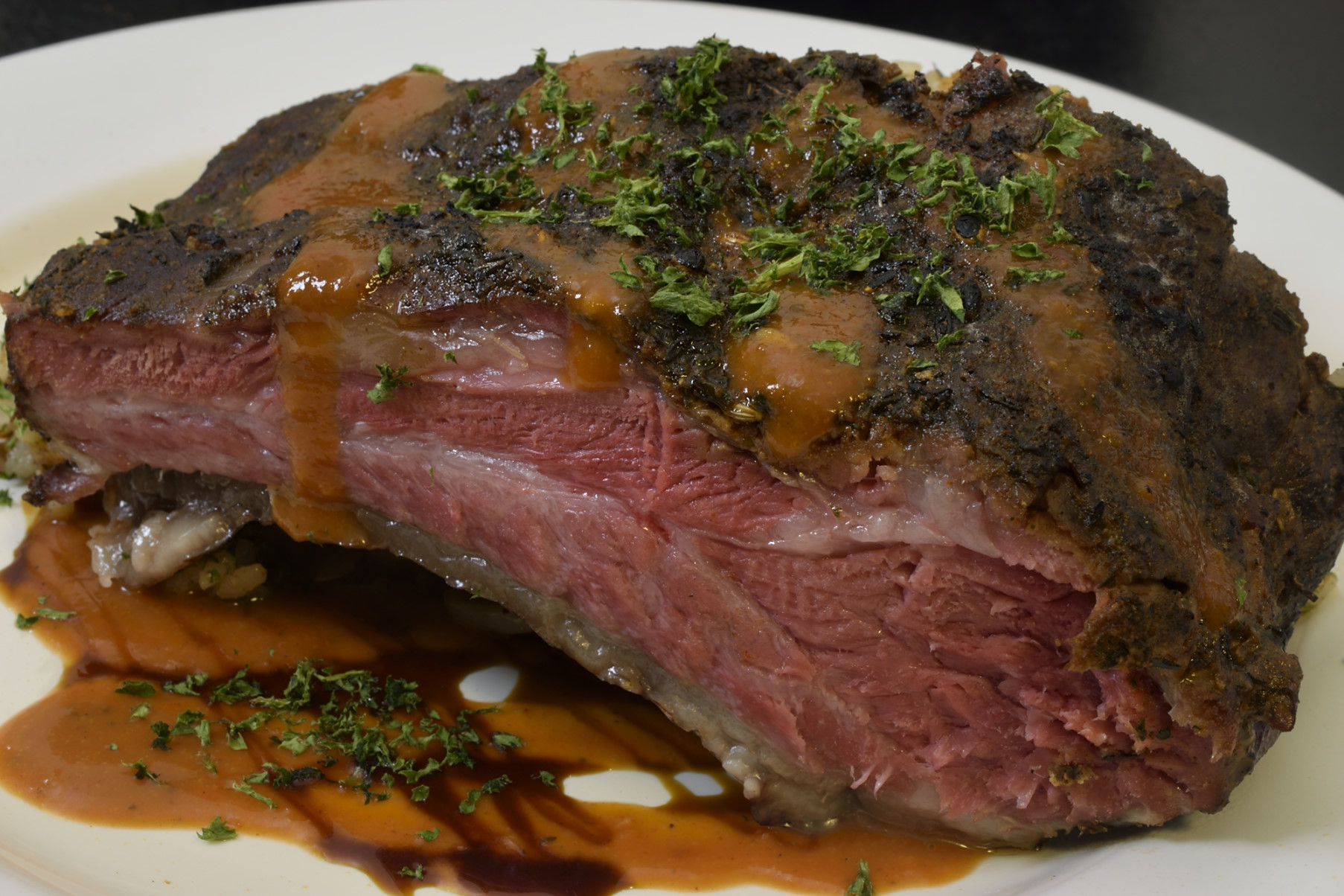
About
Beef ribs are becoming a more popular application of sous vide processing, with minimized shrinkage and unique results.
Ingredients
Beef rib bones, 1 side, usually 7 bones (or less--the recipe is unaffected).
Powdered egg white, a sprinkling, or one fresh egg white.
Cajun Black Spice, one recipe.
Barbecue Sauce for basting and/or dipping, as described HERE.
Equipment requirements
Immersion circulator, portable or stationary.
Heat rated container, minimum of 4 gallons/9 liters.
Heat rated sous vide bags.
Colander.
Paper towels.
Flour shaker/sifter.
Spray bottle filled with water.
Infrared or probe thermometer.
Outdoor smoker or kitchen oven.
Instructions
Serves 3+ Level of difficulty: 2.25
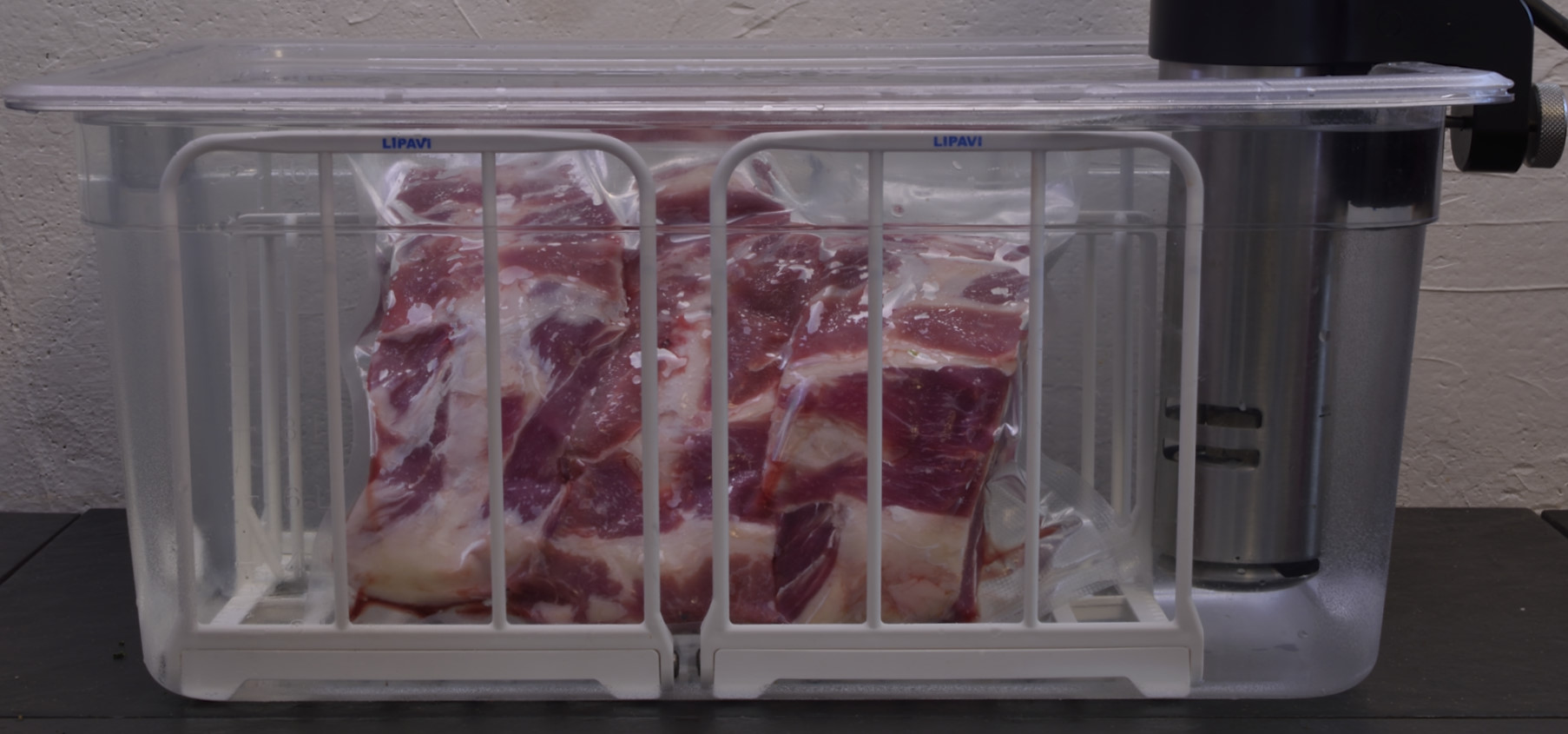 Above: Lipavi C20 container, N20 polycarbonate racks. Lipavi C20L-AO lid. Notes: The cut can be processed whole or divided into smaller pieces without recalculating the time/temperature guideline. This gives you more storage and preservation flexibility.
Above: Lipavi C20 container, N20 polycarbonate racks. Lipavi C20L-AO lid. Notes: The cut can be processed whole or divided into smaller pieces without recalculating the time/temperature guideline. This gives you more storage and preservation flexibility. Procedure:
Stage the ribs into dedicated vacuum bags. Seal and sous vide process at 140 F/60 C for 24 hours. While the ribs are processing, assemble the rub according to the recipe (or use your own favorite brand). Set aside. After the 24 hours have elapsed, submerge the package(s) in iced water until they reach 70 F/21 C. Refrigerate at 40 F/4 C until day of use (even if it's the same day). This protects your refrigerator and its contents from temperature contamination--refrigerators are not designed to or capable of cooling hot foods in a timely manner. After cold shocking, the ribs can be kept sealed and refrigerated in this tenderized, pasteurized/preserved state for at least two weeks. Day of service: Submerge the refrigerated package(s) of ribs in hot water for five minutes to fully melt the gel. You can use hot tap water (125 F/52 C) or the sous vide bath if you are processing something at the time. Cut open a corner of the bag and harvest the juices into a microwaveable container. Microwave process the reserved juices for one minute. They will begin to boil, turn from pink to gray and form a sort of raft on top--this is coagulated albumins and myoglobin. Break apart and process again for 15 seconds. Put the colander above the sauce pot and line with a moistened paper towel--moistening the towel prevents the juices from clinging to it. Pour the boiled juices through the colander. Once clarified, the juices are the equivalent of a salt-free, reduced consommé--clear and packed with flavor. These juices can be substituted in any savory recipe that calls for water or stock. Set aside for future application, HERE is a BBQ sauce that uses these juices. Preheat the smoker to 180 F/82 C or conventional kitchen oven to 225 F/121 C. Finish removing the rack from the packaging. Lay the processed rack on parchment or butcher paper. Pat dry with a clean towel or paper towel. Dust lightly with flour, and then the powdered egg white. Mist with water and use gloved hands to pat until the rack has a moist, sticky surface. If preferred, use a fork to scramble a fresh egg white with 2 Tablespoons of water in a bowl and then moisten the top of the ribs. The egg whites replace the albumins released from the ribs during processing. This light coating recreates the surface that is inherent in all meat and helps seasonings to adhere.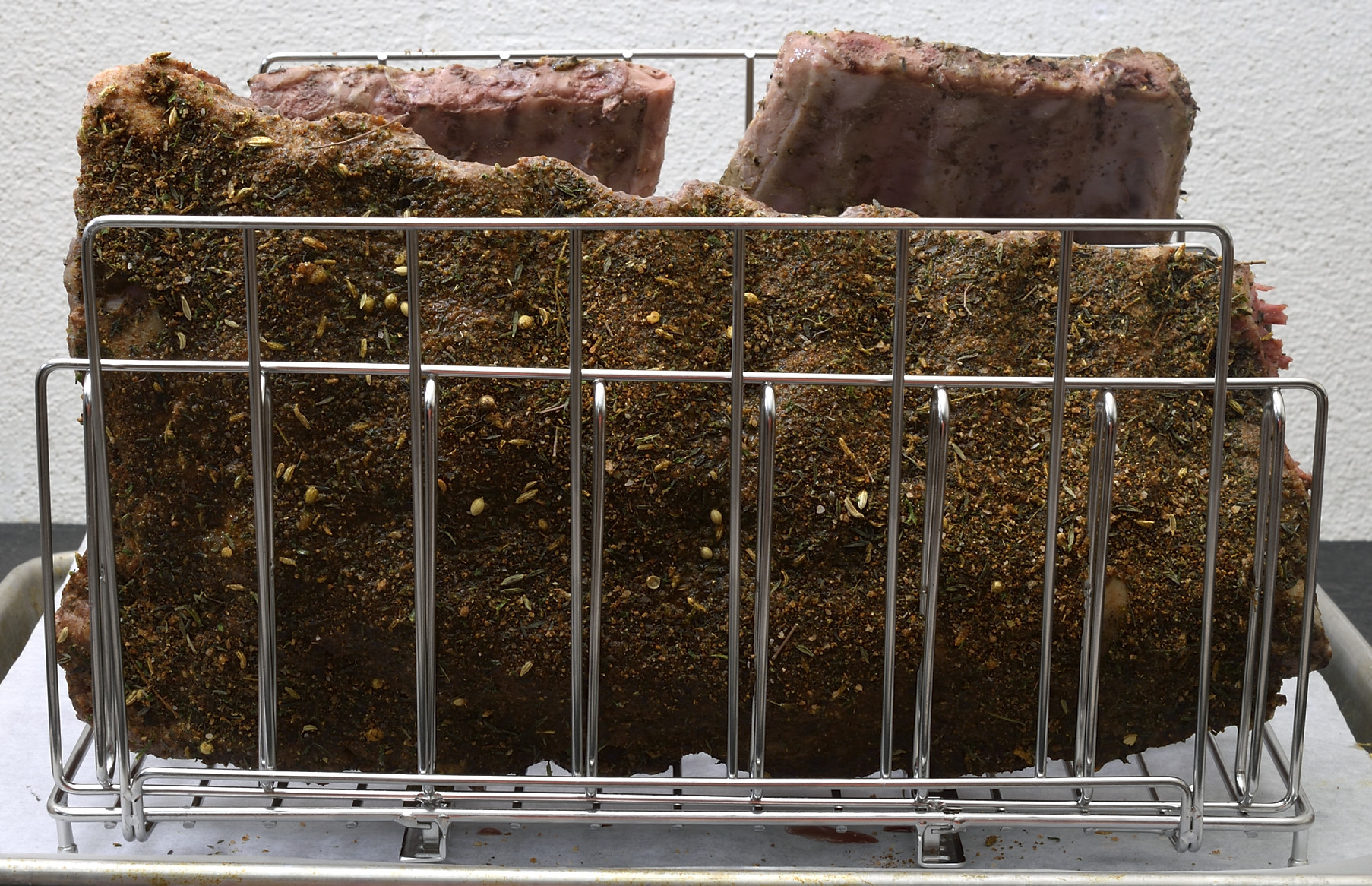 Sprinkle the Cajun Black Spice rub generously over the moistened surface. Allow to rest for at least fifteen minutes to give the seasonings time to cling. Repeat the process on the other side if desired. Use cooking spray to lightly coat the surface--this encourages even browning. Stage the ribs into the smoker or oven, roast for at least two hours before opening the chamber--this prevents the unnecessary loss of heat.
Sprinkle the Cajun Black Spice rub generously over the moistened surface. Allow to rest for at least fifteen minutes to give the seasonings time to cling. Repeat the process on the other side if desired. Use cooking spray to lightly coat the surface--this encourages even browning. Stage the ribs into the smoker or oven, roast for at least two hours before opening the chamber--this prevents the unnecessary loss of heat. 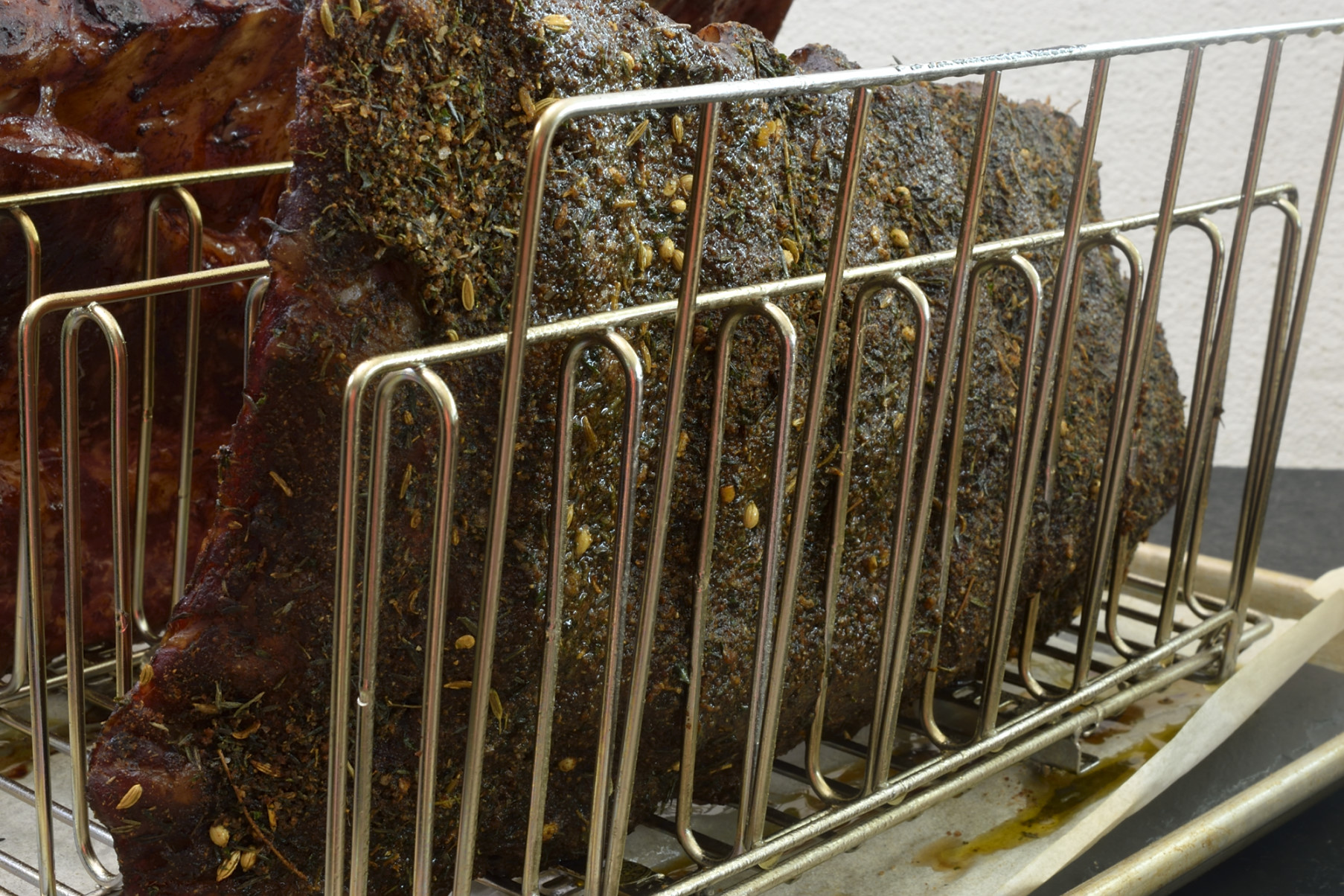 Continue roasting until desired appearance is achieved--usually about 3 hours total.
Continue roasting until desired appearance is achieved--usually about 3 hours total.  Carve between the bones and serve!
Carve between the bones and serve! 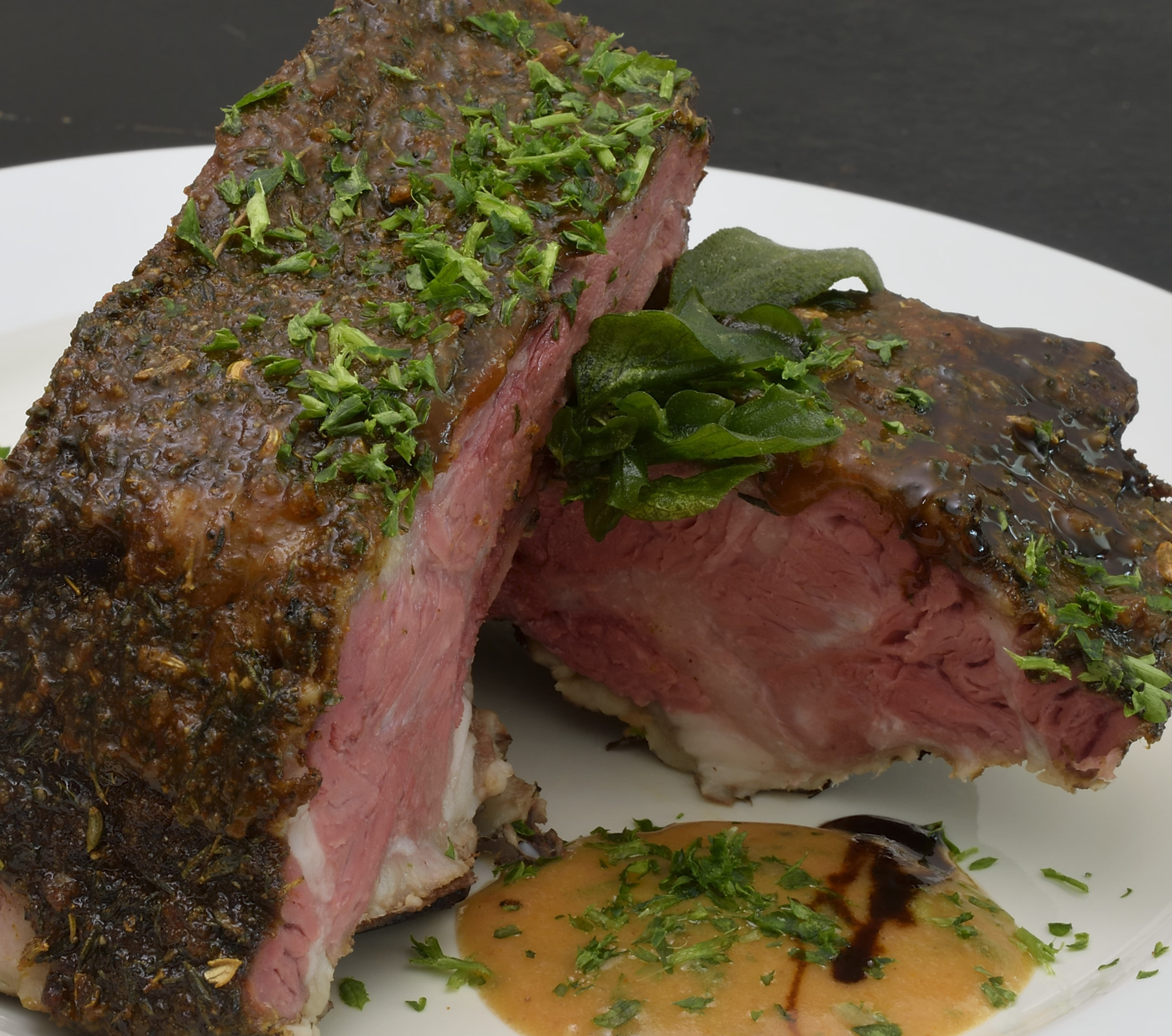 If the internal temperature of the ribs never exceeds 140 F/60 C, the meat may remain pink as in the picture above. This is a feature unique to sous vide, but not every one finds it desirable.
If the internal temperature of the ribs never exceeds 140 F/60 C, the meat may remain pink as in the picture above. This is a feature unique to sous vide, but not every one finds it desirable. 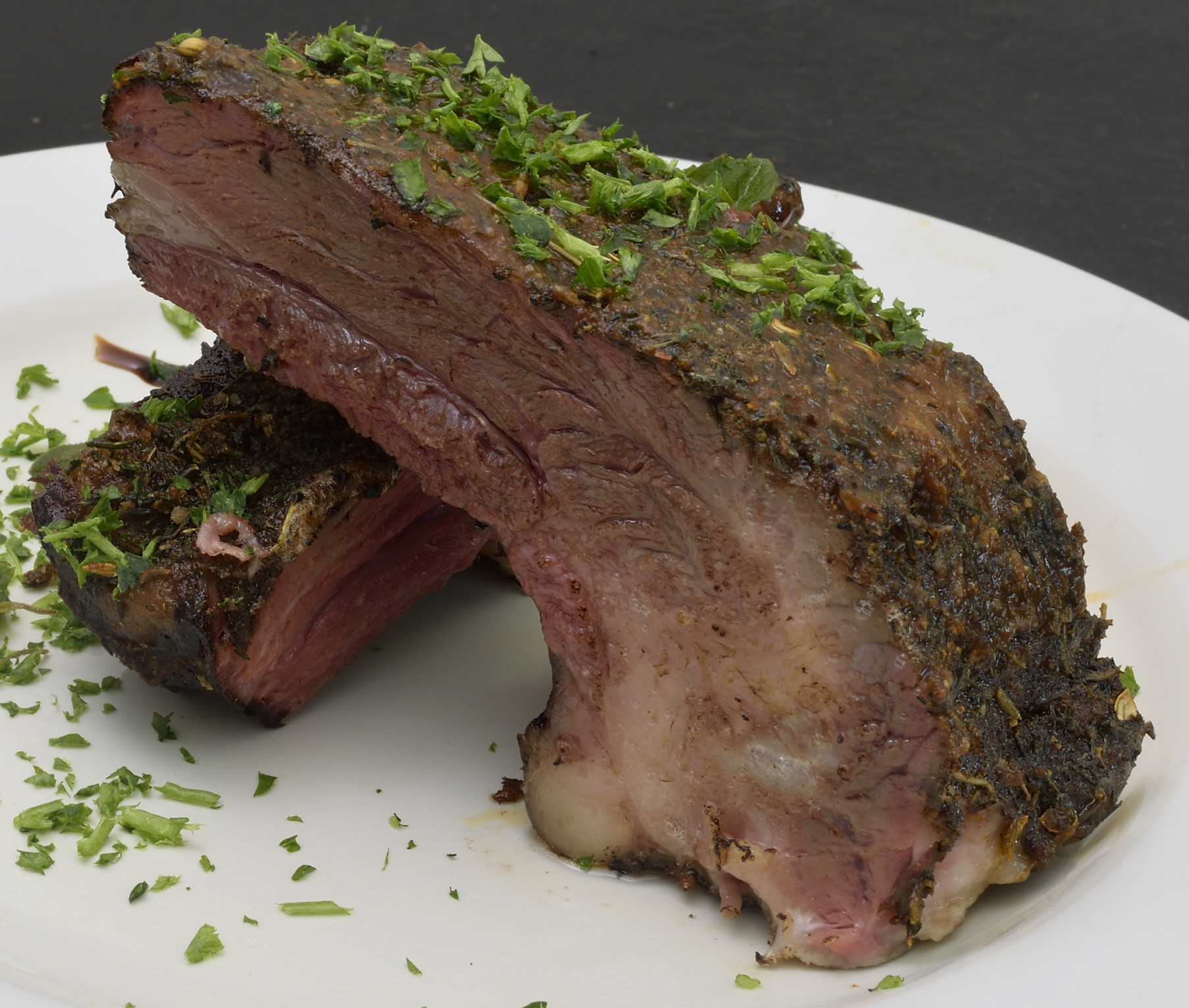 If you are one of those people, simply use a torch, a hot skillet or the broiler function in your oven to achieve the more familiar result.
If you are one of those people, simply use a torch, a hot skillet or the broiler function in your oven to achieve the more familiar result.  (above) Another 6 hours @165 F/74 C after smoking will give you a more "fall off the bone" texture...
(above) Another 6 hours @165 F/74 C after smoking will give you a more "fall off the bone" texture... 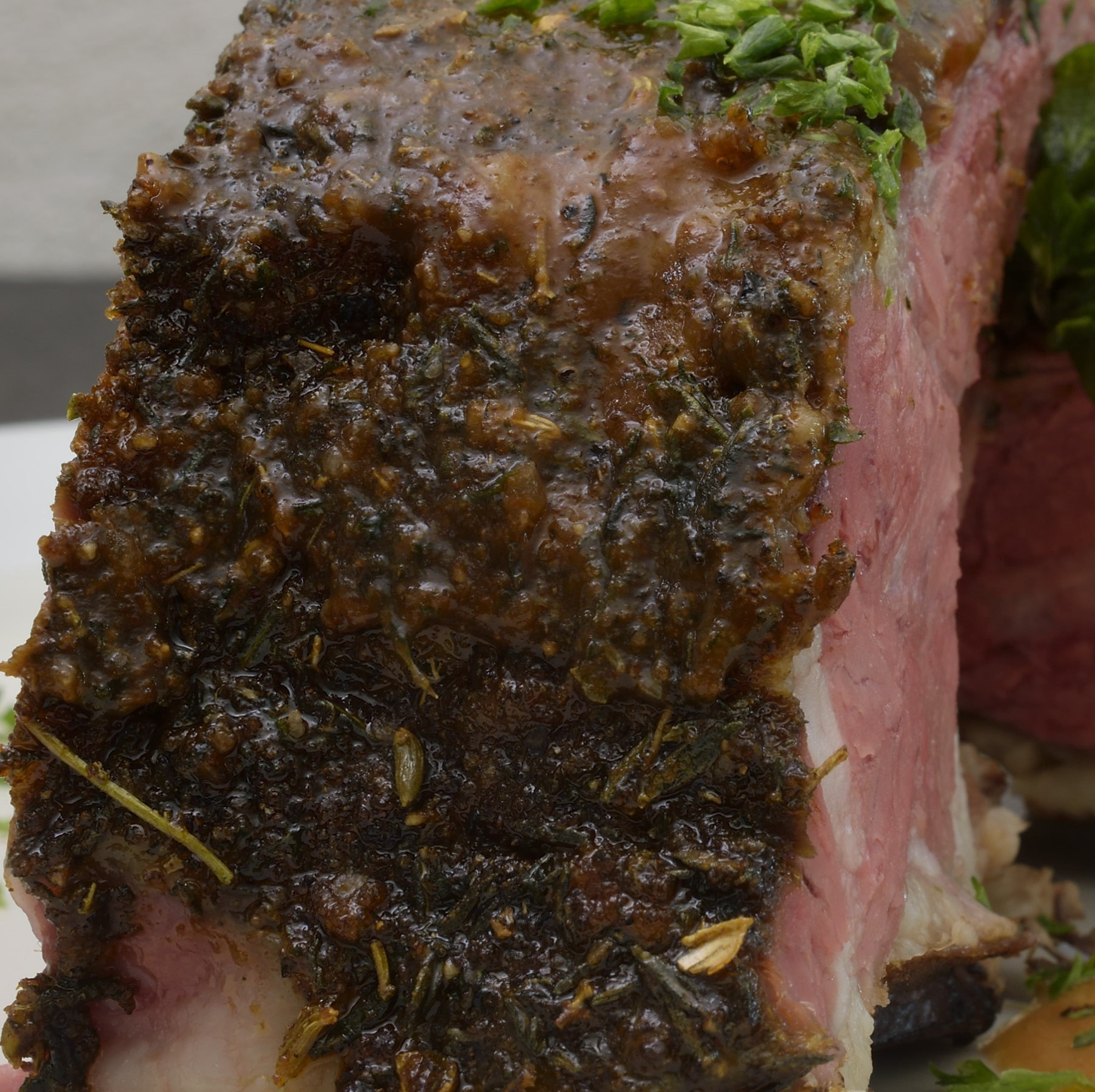 If desired, the ribs can be lightly coated with the sauce and torched or returned to the oven as pictured above.
If desired, the ribs can be lightly coated with the sauce and torched or returned to the oven as pictured above. 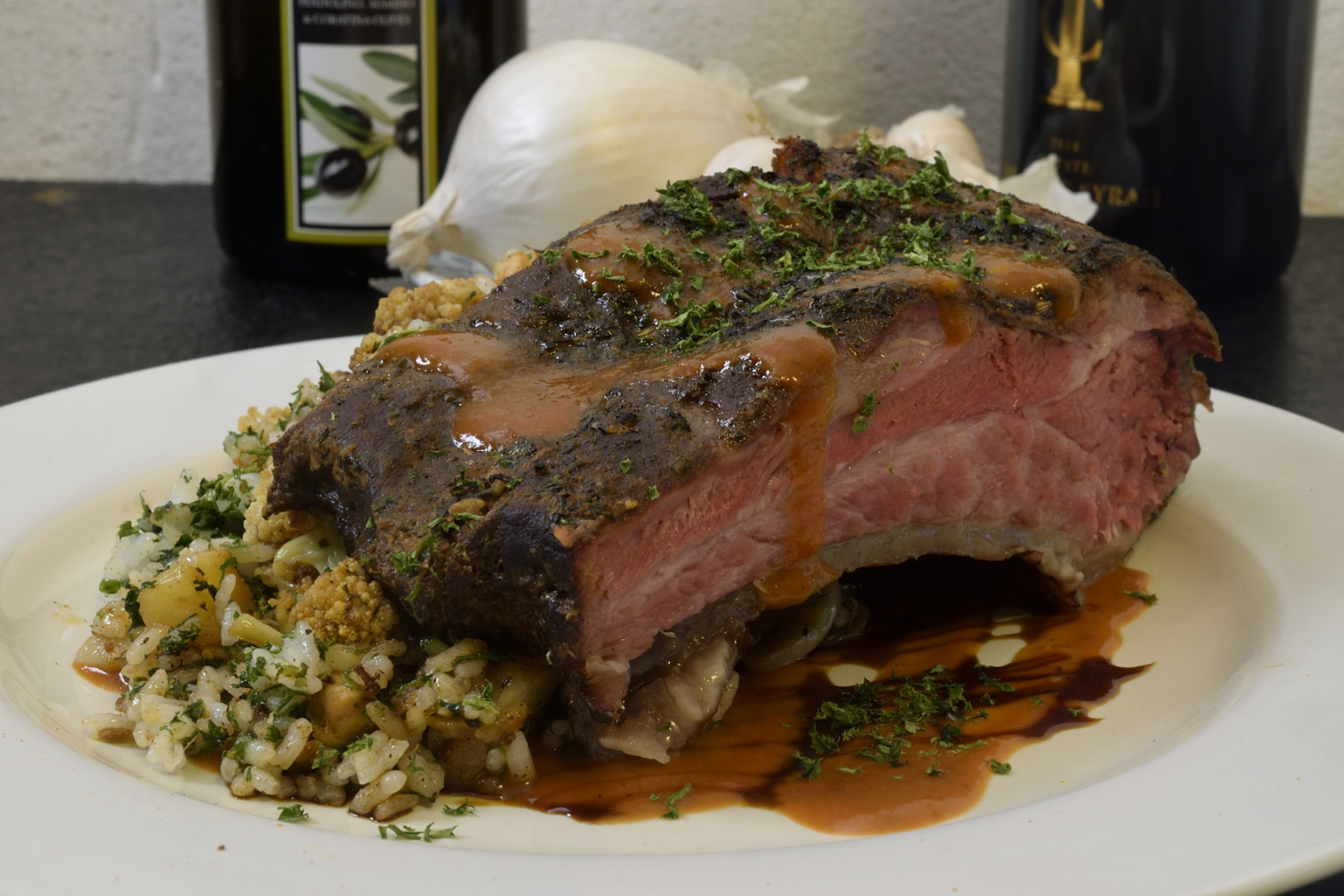 Pictured above: beef bones with pineapple dirty rice, roasted cauliflower.
Pictured above: beef bones with pineapple dirty rice, roasted cauliflower. Norm King
Pictured below: beef bones with blue cheese salad, golden beets, and crisped leeks.